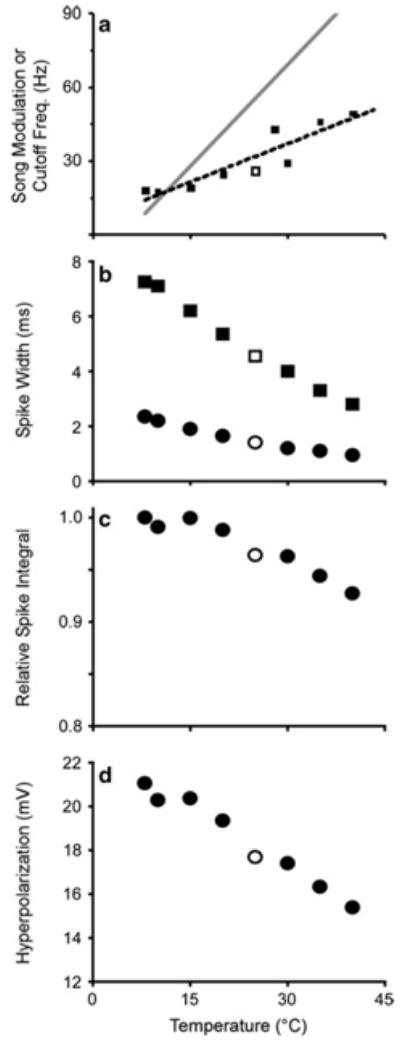Fig. 10.

Effect of temperature on spike generation and adaptation. a TMTF of amplitude modulation coding. Dotted line is linear fit to data (slope = 1.04; intercept = 5.9). This slope is shallow relative to the change in song modulation frequency with temperature exhibited by males (solid gray line slope = 2.756; intercept = −13.12; Walker 1962). b Speed of spike generation increases with temperature. Plot shows the spike width (duration) during depolarization above −55 mV. Squares and circles are the widths of the first spike and the first spike after τremoval,1 (34.4 ms), respectively. c Reduced spike width caused by increasing temperature reduces the integral of depolarization by ~ 10%. This reduction leads to reduced activation of ICa and Iahp, reducing hyperpolarization as shown in d. Open symbols are simulations run at the standard 25°C
